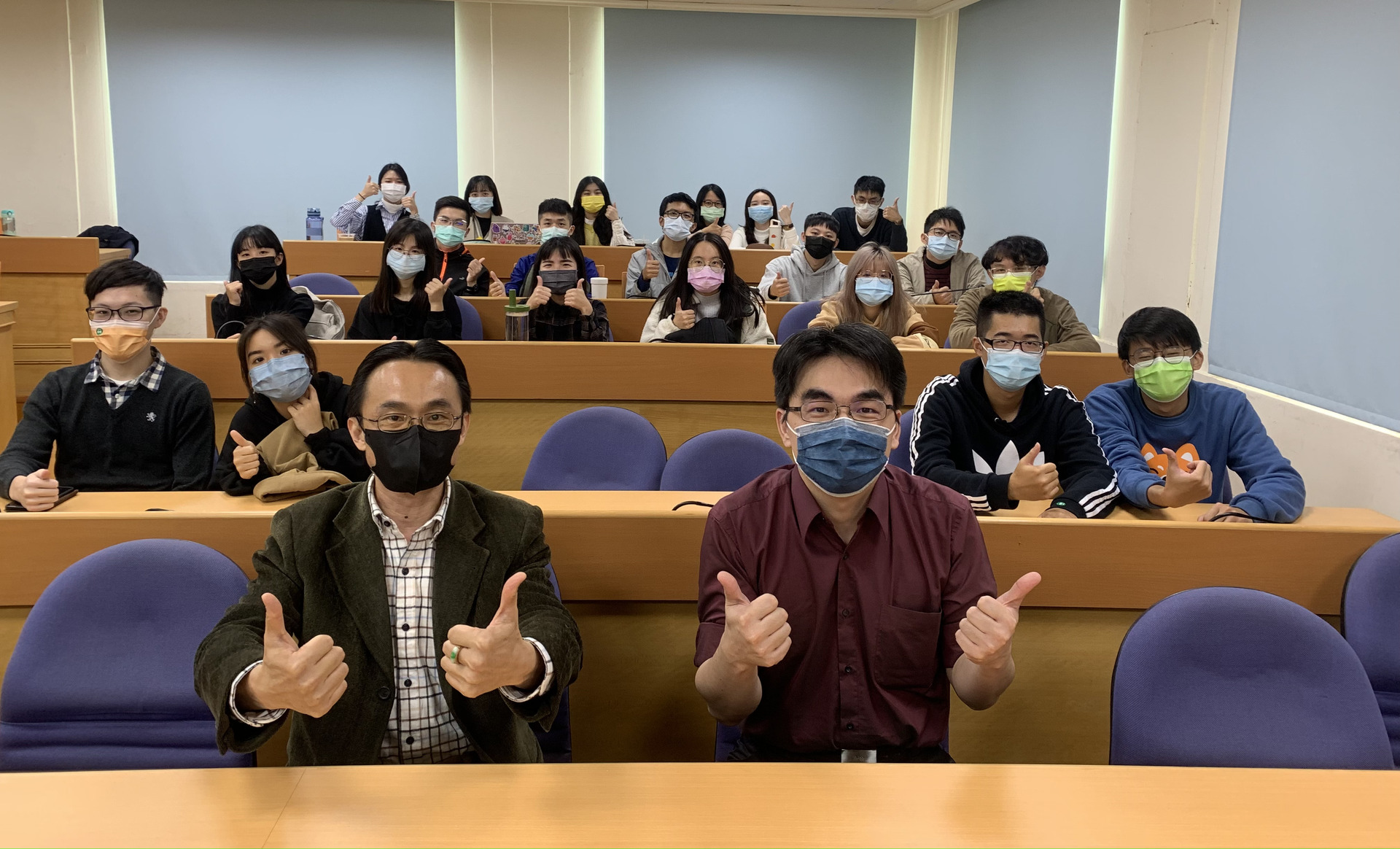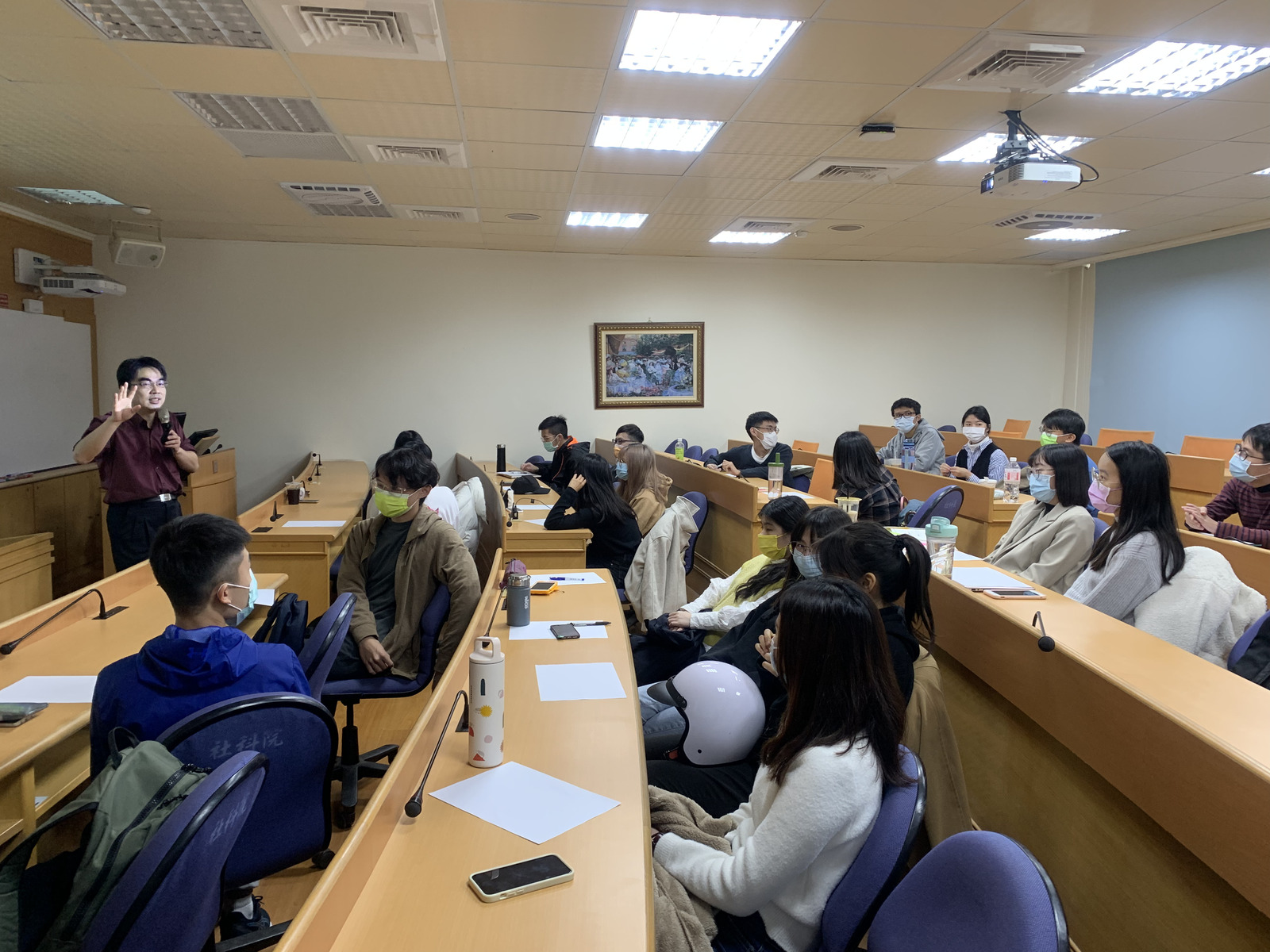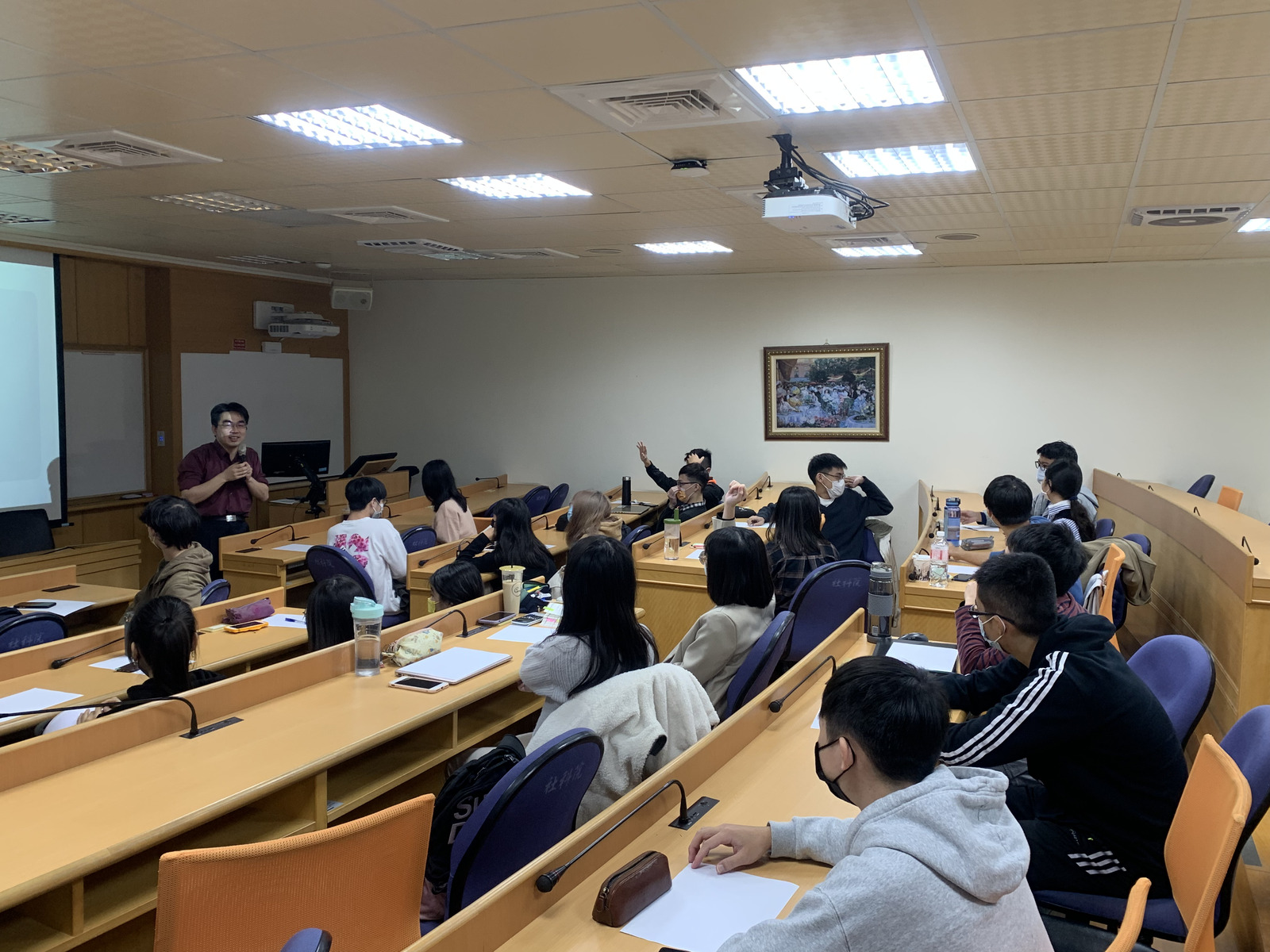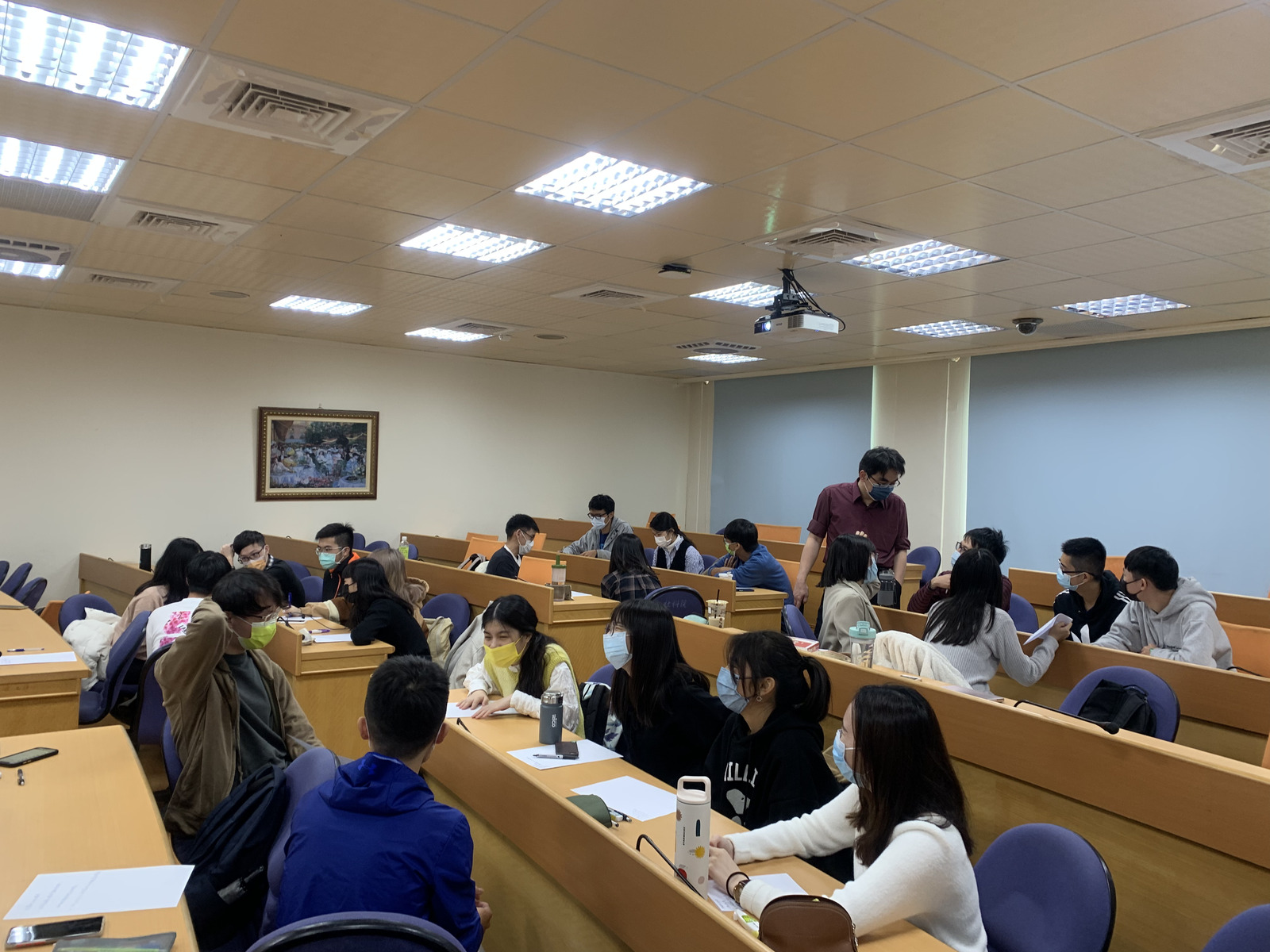Cultivating data science talents: how to think as a data scientist




2022-03-14
(Provided by College of Social Sciences) Nowadays, human activities produce an enormous amount of data. Through data analytics and interpretation, data can accurately define and predict human activities. Almost all industries heavily rely on data analytics to identify and solve issues. Thus, big data analytics narrate their own significance and challenges alongside the booming field – data science. To cultivate more data science talents, the Smart City & Smart Mobility Co-Learning Group at the College of Social Sciences invited Steven Huang, a senior associate of PwC Taiwan, to lecture a seminar on data at NSYSU. The seminar aimed at showing students how to use big data analytics tools as well as guided them to work smart with data. Students at this seminar learnt data interpretation and this skill allowed them to analyze issues and solve problems.
“The key to problem-solving is to master methods of thinking and think outside the box”. Huang emphasized: solving problems requires masterminding methodological frameworks. Thus, a data scientist should always stay curious to be able to imagine alternative frameworks. Also, data scientists should challenge their ways of thinking frequently. How should a data scientist train oneself to think outside the box and create a framework for problem-solving skills? Huang suggested they start with critical, logical, and hypothetical thinking. An attitude of constant self-challenging manifests itself in critical thinking. One can learn how to map problems through logical thinking, which allows a data scientist to get a grip of identifying important factors of problem. At last, practicing hypothetical thinking is to improve the efficiency of problem-solving skills: a data scientist should formulate several hypothetical explanations of a problem and then verify the hypothesis by collecting information. Simply put, a data scientist has to realize how and where problems surface to identify the problems and determine goals in solving the problems. Concluding, this kind of thinking training helps data scientists map out efficient routes to reach their goals. Thus, data scientists can restructure problems with diverse methods of thinking as well as analyze problems in order to solve them.
Huang explains how to analyze a question step by step based on its cause and effect. The first step is to observe why this question exists. For example: why are high-calorie food products more popular than usual when a cold wave arrives? The next step is to restructure the question with critical thinking by quantifying the question, which means showing the statistics, such as the temperature during a cold wave or the calories of high-calorie food products. The third step is to search for data and include indefinite quantifying factors in different frameworks. The last step is to verify hypotheses or the cause and effect of this question by analyzing the collected data. Big data analytics tools allow performing calculations and visualizing results that can project future trends and provide solutions.
Students’ feedback to the seminar highlighted Huang’s methods of thinking, such as critical and logical thinking, as a unique skill that helps them practice analyzing questions. This kind of practice, as some students specified, let them understand how to think when analyzing data. They had not systematically learnt this kind of thinking methods. During the seminar, Huang encouraged students to practice the aforementioned methods of thinking to think outside the box and innovate their frameworks of solving problems. Analyzing the core of questions based on data allows data scientists to think beyond questions per se and explore them further.
(Provided by College of Social Sciences) Nowadays, human activities produce an enormous amount of data. Through data analytics and interpretation, data can accurately define and predict human activities. Almost all industries heavily rely on data analytics to identify and solve issues. Thus, big data analytics narrate their own significance and challenges alongside the booming field – data science. To cultivate more data science talents, the Smart City & Smart Mobility Co-Learning Group at the College of Social Sciences invited Steven Huang, a senior associate of PwC Taiwan, to lecture a seminar on data at NSYSU. The seminar aimed at showing students how to use big data analytics tools as well as guided them to work smart with data. Students at this seminar learnt data interpretation and this skill allowed them to analyze issues and solve problems.
“The key to problem-solving is to master methods of thinking and think outside the box”. Huang emphasized: solving problems requires masterminding methodological frameworks. Thus, a data scientist should always stay curious to be able to imagine alternative frameworks. Also, data scientists should challenge their ways of thinking frequently. How should a data scientist train oneself to think outside the box and create a framework for problem-solving skills? Huang suggested they start with critical, logical, and hypothetical thinking. An attitude of constant self-challenging manifests itself in critical thinking. One can learn how to map problems through logical thinking, which allows a data scientist to get a grip of identifying important factors of problem. At last, practicing hypothetical thinking is to improve the efficiency of problem-solving skills: a data scientist should formulate several hypothetical explanations of a problem and then verify the hypothesis by collecting information. Simply put, a data scientist has to realize how and where problems surface to identify the problems and determine goals in solving the problems. Concluding, this kind of thinking training helps data scientists map out efficient routes to reach their goals. Thus, data scientists can restructure problems with diverse methods of thinking as well as analyze problems in order to solve them.
Huang explains how to analyze a question step by step based on its cause and effect. The first step is to observe why this question exists. For example: why are high-calorie food products more popular than usual when a cold wave arrives? The next step is to restructure the question with critical thinking by quantifying the question, which means showing the statistics, such as the temperature during a cold wave or the calories of high-calorie food products. The third step is to search for data and include indefinite quantifying factors in different frameworks. The last step is to verify hypotheses or the cause and effect of this question by analyzing the collected data. Big data analytics tools allow performing calculations and visualizing results that can project future trends and provide solutions.
Students’ feedback to the seminar highlighted Huang’s methods of thinking, such as critical and logical thinking, as a unique skill that helps them practice analyzing questions. This kind of practice, as some students specified, let them understand how to think when analyzing data. They had not systematically learnt this kind of thinking methods. During the seminar, Huang encouraged students to practice the aforementioned methods of thinking to think outside the box and innovate their frameworks of solving problems. Analyzing the core of questions based on data allows data scientists to think beyond questions per se and explore them further.
Click Num:
Share
